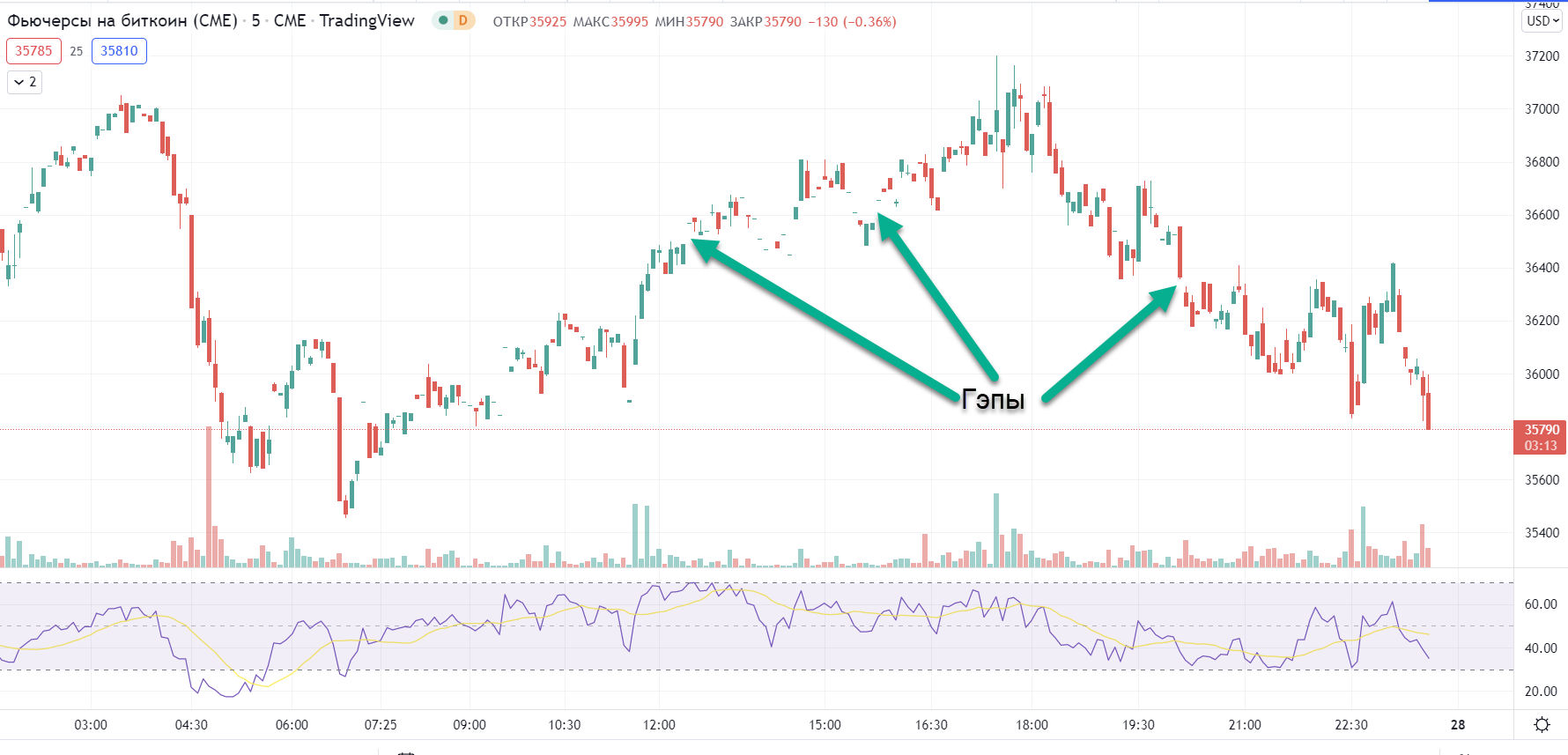Gap - what is it in trading?
In English, the term "gap" refers to an interval or break. In the context of technical analysis in stock market trading, a gap is a concept that can also be applied to the cryptocurrency market since the tools and concepts are largely identical.
A gap represents a space or visual extension on a chart accompanied by a sharp price change in a financial asset. A classic gap occurs when trading closes at one price level, and the opening of the next day begins at a price significantly different from the previous day's level. In modern cryptocurrency trading, which operates 24/7, a gap appears as a rapid price increase or decrease within a short period on a specific timeframe.
There are four main types of gaps:
- Common Gap: Occurs during a sideways price movement and indicates low interest from market participants towards the cryptocurrency asset.
- Breakaway Gap: Signifies a significant price change, breaking through a significant support level, and indicating increased trading volume.
- Continuation Gap: Identifies the midpoint of a price movement with heightened market participant interest, suggesting that the asset's price will continue in the current direction.
- Exhaustion Gap: Occurs during high trading volume, indicating that the price will soon change direction from the current trend.

Factors Contributing to Gaps in Cryptocurrency Trading
Traders often observe the influence of fundamental factors on cryptocurrency prices. Key interest rates, news background, and global events can impact blockchain assets' prices. The following factors can be identified:
- Current news, including speeches by politicians and bankers, unexpected statements from prominent figures.
- Force majeure events, such as mining bans in various countries or global power outages and internet disruptions, which negatively affect the cryptocurrency world.
- Trend changes, when whales - large market players - abruptly change their strategies, influencing cryptocurrency prices.
For market participants, gaps can present opportunities for profit. By recognizing a gap, traders can speculate that the price will fill the gap and return to its original position or continue its movement.
